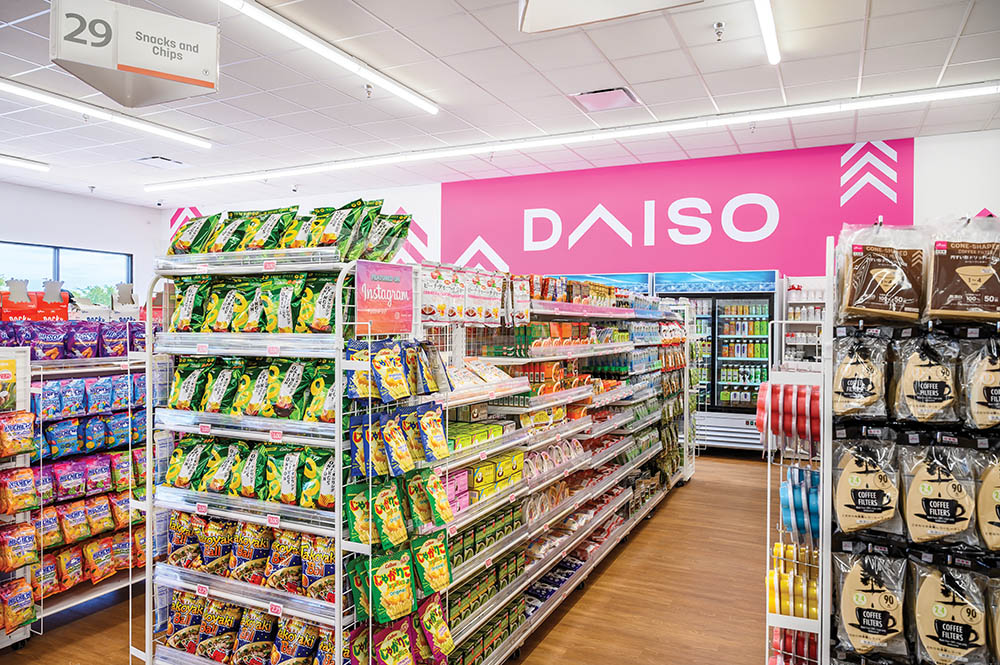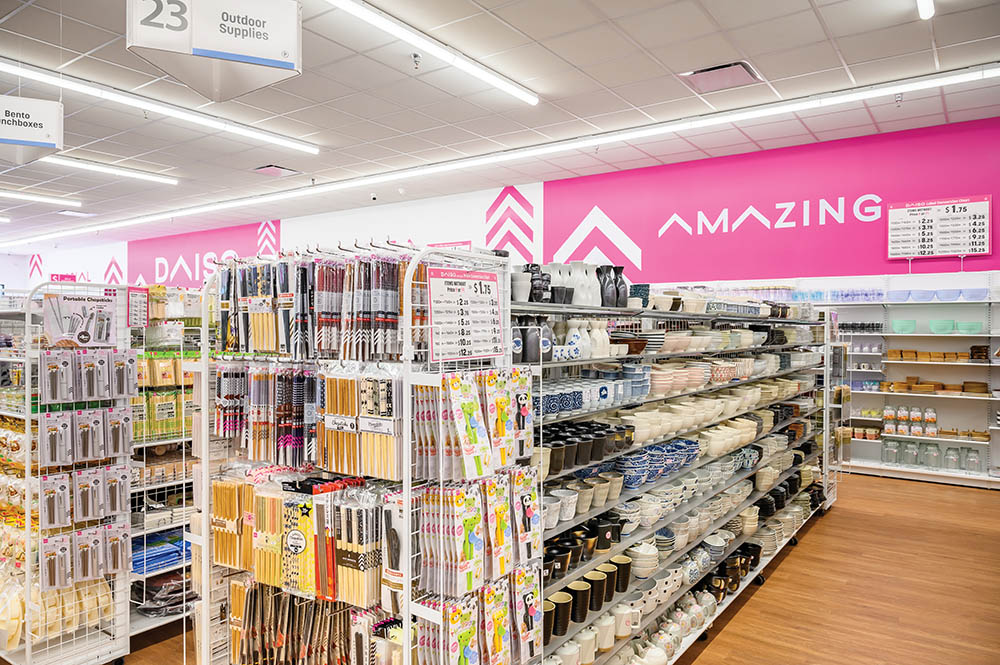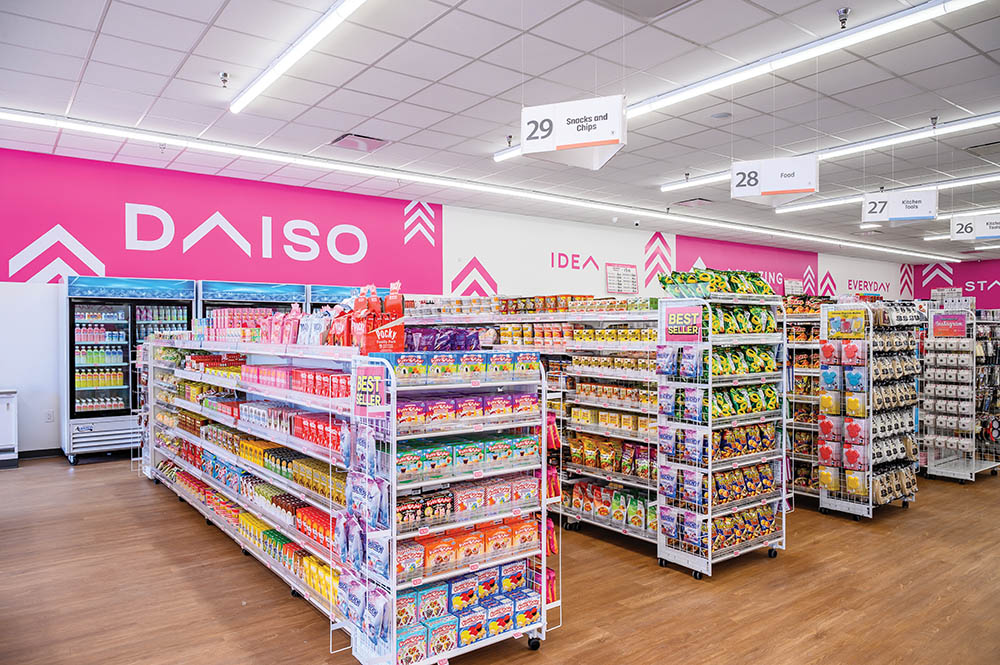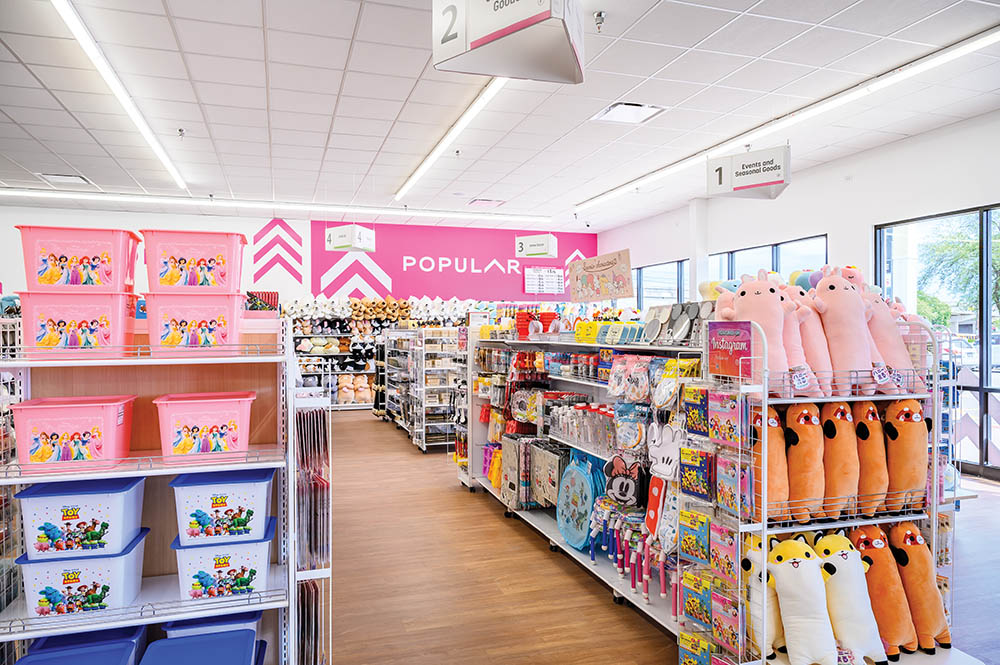— By Hayden Spiess —
Japanese specialty retailer Daiso is bringing its eclectic range of retail to more markets throughout the United States and broadening its consumer base.
In a recent video review of Daiso, YouTube content creator Retail Archaeology — who produces profiles on retail concepts — displays the spoils of their visit to a Daiso store in Chandler, Arizona: a miniature fan and a pack of instant ramen.

This random coupling of items exemplifies the eclectic nature of the Japanese retailer’s product assortment. According to John Clarke, chief development officer with Daiso’s American team, this range of Japanese household goods is part of the character of the brand. Clarke reports that the owner of Daiso believes that this range is “part of the character and uniqueness of Daiso and what makes people love it so much.”
This love for Daiso is well evidenced in the retailer’s impressive footprint — currently, the global company boasts a portfolio of more than 5,800 storefronts. Now, the brand is heavily investing in its U.S. presence, moving into new markets and regions and experiencing impressive expansion — not just of its store count, but also of its consumer base.
The demand for Daiso stores opening in cities across the U.S. is palpable and growing, as evidenced by the enthusiastic comments flooding social media platforms. With each new store announcement, the excitement grows, with fans expressing their anticipation for the convenience of having a Daiso nearby. These comments highlight the demand and loyal following that Daiso has cultivated in the North American market.
Global Goods
Daiso’s eclectic assortment of products extends well beyond electronic fans and noodles. Clarke notes that the stores do carry other electronic items, all of a “cutesy, simple” nature. Somewhat surprisingly (in this day and age) Daiso still carries compact disc cases, adding to the retailer’s unique charm. Another, even more surprising offering? Fishing lures.

On the whole, though, the brand’s goods are of a widely practical bent. Clarke likens the offerings of Daiso stores to that of earlier and more simple iterations of Walmart, before the Supercenter days. (Clarke is something of an expert on the topic, as a former Walmart associate who ran development for the company for a number of years.)
A bit paradoxically, though the types of merchandise for sale vary widely, there often is little variation among the specific goods themselves. That is to say, there is typically a single version — or perhaps two — of any given item.
“Do you want toothpaste at a Daiso? We’ve got toothpaste. Maybe two — not 20 or 30 different choices,” says Clarke of this minimalism. He presents this as a direct contrast to stores such as Target, where “when you try to buy a toothbrush, you might be in there 20 minutes trying to figure out which one you want, because there are so many choices: sizes, colors, bristles…” Daiso, on the other hand, doesn’t overcomplicate such necessities. Clarke attributes this difference to the distinctly Japanese character of Daiso and the divergences between American and Japanese culture.

Japanese identity also permeates the Daiso collection of household goods, which includes a “worthy assortment of chopsticks.”
“We’ve got a lot of cookware, whether it’s bowls, plates or the cookware rather unique to Japanese households,” elaborates Clarke. “Many of these are things that you wouldn’t tend to find in an American household, and thus, you won’t find them in traditional retailers in the United States.” Such goods generate attention on social media, reports Clarke, who adds that consumers are “finding a lot of things that they’ve never seen before.”
Inventory at Daiso stores is not static either. In addition to the types of seasonal inventory changes common amongst most retailers, Daiso’s product offering is subject to evolve as the company’s Japanese buying teams find unique products in connection with the global travels of the brand’s owner and leaders. “We’ll move in new items quite a bit,” says Clarke. “But for the most part, the basic goods are still always there.”
Appealing to Americans
In keeping with its country of origin and the Asian bent of its product selection, Daiso has historically positioned itself in and served predominantly Asian communities within the United States. Until a few years ago, according to Clarke, “pretty much all the Daisos in the United States were in Asian communities — mostly Japanese areas, but some Korean, some Chinese…but all Asian communities.”
Daiso’s expansion beyond these demographic confines was something of a happy accident. Roughly 8 years ago, the company made its entrance into Texas, following an Asian grocer — 99 Ranch Market — and expecting that the grocer, and therefore the new Daiso stores, would be dominated by Asian customers. When the owner visited the new units, however, he discovered that they were being patronized by mostly non-Asian consumers. Even so, the new Texas stores were performing just as well as the rest of the Daiso’s U.S. fleet. This marked a pivotal moment for the brand, which realized the potential of growth for Daiso in the U.S.
Overseas Origins
Daiso’s foray into the American markets is a relatively recent one. It was 2005 when the brand first entered the U.S. scene, opening a store in Lynnwood, Washington. The brand’s genesis dates much further back, to 1977, with the first store opening occurring in 1991 in Japan. By 1998, Daiso marked its 1,000th store in the country.

There, the retailer was branded as a “100-yen” store, a label Clarke says Daiso embraced, as a marker of great quality and a great value. This embrace has created something of a challenge for Daiso’s American team, which seeks to maintain the brand’s distance from American-bred dollar stores.
Actual prices vary broadly at Daiso stores, with item costs ranging from 25 cents to 40-plus dollars. Most of the products are packaged in Japanese, with American stores featuring pricing charts so that shoppers can make the conversion from yen to dollars, another quirk the owner believes lends charm to the business.
No Growing Pains
Now, Daiso’s American portfolio comprises 120 storefronts across seven states, and the brand is harboring ambitious plans for growth throughout the country. Originally positioned predominantly on the West Coast, Daiso has continued its push into Texas, with 24 units in the state and more openings scheduled for the remainder of 2024. The company also opened a distribution center in the Dallas-Fort Worth area within the past several months, allowing the retailer to continue pushing eastward with its store openings.
In 2025, Daiso plans to expand into 18 new markets. Targets include a number of locations in Florida — Miami, Tampa, Orlando, Jacksonville and Pensacola included — as well as Atlanta; Mobile, Alabama; Denver; Salt Lake City; Chicago; Minneapolis; St. Louis; Kansas City, Missouri; Oklahoma City; and Tulsa, Oklahoma. Altogether, an additional 110 stores are scheduled to open next year.
An ideal box size for Daiso is roughly 8,500 square feet, and Clarke says that the chain plans to pursue only sites comprising at least 7,000 square feet moving forward. “Our customers actually buy more when they have shopping carts and wider aisles,” explains Clarke.
Aside from adequate size, Clarke seeks good access, visibility and rent terms when selecting sites. In more Eastern U.S. markets, where the brand may be less familiar, Clarke seeks to position new stores with developments that allow for strong retail synergy. “I want to make sure we’re going into centers that have some regular and consistent traffic to bring people across our doorstep to help grow the brand, just by our physical store presence,” says Clarke. “So, we’re looking for grocery-anchored centers….or a center that’s effectively unanchored by the bigger boxes, but anchored effectively by the synergy of the junior boxes.”
Given the brand’s strong performance thus far, it can be expected that it won’t take long for Daiso’s new-to-market stores to achieve the popularity evidenced at a recent grand-opening event, where lines wrapped around the shopping center.
— This story originally published as the cover story of the May 2024 issue of Retail & Restaurant Facility Business magazine. Interested in being profiled? If your retail or restaurant company has a story to tell, please email the editor, Katie Lee, at [email protected].

